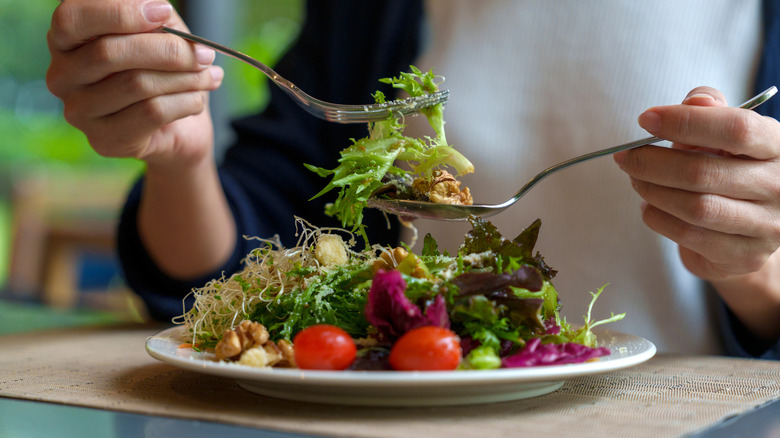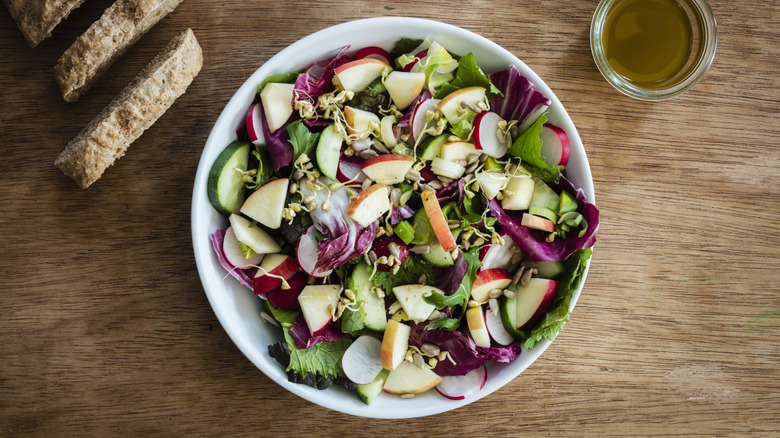
Thai Liang Lim/Getty Images
If you're planning a trip to France, you might want to prepare by brushing up on some common words and phrases ("Bonjour," "s'il vous plaît," and "merci beaucoup" are a good place to start). Yet beyond verbal politesse, you should also be aware of your table manners. Different cultures have varying standards for dining etiquette, and when it comes to dining out at a French restaurant, there's more to know than just keeping your elbows off the table.
Let's start with salads, which in France, actually aren't a starter at all. In American dining, you'll usually chow down on greens before your entrée, but in France, that spring mix is traditionally served after the main course. It's considered a palate cleanser of sorts, meant to freshen up your taste buds after you've eaten that plate of escargot or coq au vin, and get them ready for the cheese and dessert course.
Once you do receive the salad, you'll want to be mindful of how you eat it. Step one: Ditch the knife. There should be no cutting involved when consuming your leafy spread, and doing so might be seen as a slight to the chef — a subtle suggestion that they didn't prepare it correctly. This rule is said to date back to an era when the silver knives used by the bourgeoisie would oxidize when met with vinegar, so it was considered rude to ruin your host's silverware by sawing into your salad.
In France, never take a knife to a lettuce fight

Westend61/Getty Images
The idea of never cutting a lettuce leaf is so ingrained in French culinary culture that knives are not used when preparing salad either. Instead, the lettuce is hand-torn. Cutting is avoided to prevent the leaves from turning brown before the salad even hits the table.
This is a good idea in theory, and the origins of the practice make sense. Yet one question remains: What do you do if a crunchy curl of lettuce is just too big to put into your mouth politely? Don't worry, the French have given thought to the posh-seeming yet practical table manners surrounding proper fork-holding. First, you can do the fold. Take your fork and, yes, knife (but only in this special circumstance) to your oversized leaf and fold it into itself to create a smaller, more fork-friendly piece. If there are no knives on the table while the salad is served (a not-uncommon situation), you can alternatively use a piece of bread to help fold the leaf and properly scoot it onto your utensil.
With the salad course alone being so tricky, you might want to reduce complications elsewhere during your meal. The best way to do that? Take a French chef's advice and order the prix fixe menu; that way, you're getting served everything just the way the house intended. Hey, when in Rome — er, France.



